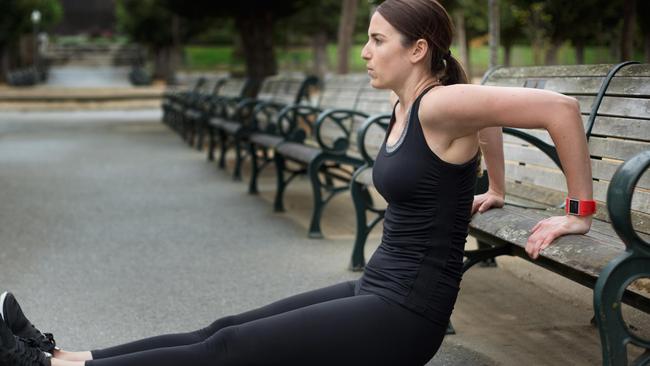Diet, sleep and exercise – Do you have the optimum schedule?
A new study has laid bare how short many fall in their dietary, sport and shut-eye needs. Here’s how meeting the recommended targets can improve your wellbeing.

Are you really doing enough for your health? Where are we going wrong? Here’s a guide to what’s enough to stay fit and healthy.
1. Get enough daily steps
Target: 9800 a day
Researchers from Australia and Denmark recently analysed data from wrist activity monitors that were worn by almost 78,500 people, all participants in the UK Biobank, 24 hours a day for seven days between 2013 and 2015. Over the following six to eight years they tracked the health outcomes, logging how many participants developed heart disease, cancer, dementia or died during that time. Their results, published in JAMA Neurology and JAMA Internal Medicine, showed that performing “just under the popular threshold of 10,000 steps per day” is the sweet spot for long-term health.
When it came to developing dementia there was a 25 per cent risk reduction starting at about 3800 daily steps, but beyond that the more steps the better, with every 2000 additional daily steps also lowering the risk of heart disease, cancer and premature death by about 10 per cent. At 9800 steps a day there was a 50 per cent reduced risk of dementia, and about that amount was also optimal for reducing other health risks.

2. Walking fast enough
Target: 100 steps per minute
It’s not just the number of steps you take every day that has a bearing on health, but the speed at which you walk – and most people fail to move quickly enough. In findings from the new studies, people who walked at a brisk pace of about 100 steps a minute (or about 4.3km/h) were at a reduced risk of heart disease, cancer, dementia and death compared with those who covered the same number of steps more slowly. You don’t need to walk this quickly all the time. According to the researchers, if you aim to make 2400 to 3000 of your daily steps this pace of brisk walking you could experience a 35 per cent lower risk of dying prematurely compared with slower walkers. If you find this pace manageable, you could increase to a “vigorous” pace of 130 steps a minute (about 6.4km/h), shown to be beneficial for those aged 21-60 in a study in the International Journal of Behavioural Nutrition and Physical Activity.
3. Eating enough fruit and vegetables
Target: At least three portions of veg plus two portions of fruit a day
According to the British Dietetic Association, the average daily intake is about four portions for adults and three for children, and last week’s YouGov survey revealed that 58 per cent of adults don’t regularly eat vegetables unless they are in ready meals or preprepared foods.
Five portions a day – preferably three of those vegetables and two fruit, says Dr Linia Patel, a spokeswoman for the BDA – is the minimum we should be targeting. An analysis of 95 studies on fruit and vegetable intake by two million people conducted at Imperial College London concluded that the greatest health and disease prevention benefits came from eating double that amount.
For the record, Dr Patel says an 80g portion is the equivalent of about one small banana, half an avocado, two handfuls of blueberries, three heaped tablespoons of cooked vegetables – such as spinach, peas, broccoli or cauliflower (potatoes don’t count) – or any pulses (including lentils and chickpeas) or a small bowl of spinach or watercress.

4. Getting enough vitamin D
Target: A supplement of 10mcg vitamin D daily from October to March
It’s a government recommendation that adults and children over four years old consider taking a daily supplement containing 10mcg of vitamin D from October to March when we don’t make enough vitamin D from sunlight. According to Dr Patel it is crucial for regulating the amount of calcium and phosphate in the body, important for bone, teeth and muscle health, and also plays an important role in a well-functioning immune system. Yet a 2021 survey commissioned by the British Nutrition Foundation found that 49 per cent of adults are unaware of this advice. “We have seen little improvement in vitamin D status in the population in recent years,” says Sara Stanner, science director of the BNF. “It is really important that we make more people aware of the need to consider supplements from October to March to make sure we are getting enough to stay healthy.”
5 Getting enough fibre
Target: 30g a day
Largely down to our woefully low intakes of fruit and veg, we are also not getting enough fibre. Fibre is the substance from plant foods that’s indigestible to the body and is important for digestion and feeding the microbiota, the vast ecosystem of bacteria that inhabit our digestive systems that has wide-reaching health implications and helps to regulate appetite.
Diets low in fibre have been shown to have small populations of beneficial gut bacteria, and even tiny increases in intake – adding linseeds or chia seeds to your breakfast cereal, swapping white bread for wholemeal or eating porridge – can bring significant health gains. “If you consume your five-a-day and consume a diverse range of plant foods, you will get enough fibre,” Dr Patel says.

6. Doing enough resistance exercise
Target: At least twice a week
In 2018 an evidence review commissioned by Public Health England concluded that muscle and bone strengthening and balance activities have huge health benefits for all adults, including those aged 65 years and over, and government guidelines suggest we should all include exercises that work key muscle groups (legs, hips, back, abdomen, chest, shoulders and arms) at least twice a week to improve bone and muscle health.
Yet a recent study from the University of Manchester revealed that most older adults aren’t even aware these guidelines exist. You don’t need to do much to make a difference and weights aren’t necessary. “Try eight to 12 reps of body-weight squats, step-ups, push-ups, pull-ups and rows with resistance bands as a mini home circuit,” says Dalton Wong, founder of Twenty Two Training. “Add some balance moves such as standing on one leg, eyes closed, and the gains will be fast and significant.”
7. Being active enough every day
Target: 30 minutes a day
Activity guidelines set by the UK government are in line with those by the World Health Organisation and state that we should all aim to do at least 150 minutes of moderate-intensity activity – that’s brisk walking, dancing, cycling, tennis and aerobics – a week spread evenly over four to five days, which means 30 minutes a day most days as a minimum, just to maintain general health.
However, results from a YouGov survey published last week suggested only 29 per cent of Britons play sport twice a week, compared with 43 per cent globally. “It doesn’t have to be a consecutive 30-minute session,” Mr Wong says. “You can do it in brief bursts throughout your day but the benefits will be not only improved cardiovascular fitness and mobility, but better control of blood pressure and blood sugar levels and a reduced risk the risk of type 2 diabetes and heart disease.”

8. Taking enough fluids
Target: 1.6 litre daily for women and two litres for men
These guidelines, based on recommendations from the European Food Safety Authority, recommend that we drink 35ml of fluid per kilogram of our body weight every day. A typical mug or glass is about 200ml so they equate to eight to 10 drinks a day. “Plain water is not the only way to hydrate the body,” Dr Patel says. “Almost all drinks, including tea and coffee, count towards our fluid needs, as do foods with a high water content such as tomatoes, lettuce, cucumber and soups.”
9. Sleeping enough
Target: Six to 10 hours a night
Neil Stanley, an independent sleep scientist, says many people worry unnecessarily about getting the golden target of seven to eight hours a night. “In reality, some people need slightly more and some slightly less than average, but anywhere between six to 10 hours is a healthy norm,” he says. “Outside these figures is more of a cause for concern, but the only reliable way to tell you are getting enough shut-eye is whether you feel tired when you get up and sleepy during the day.”
The Times







To join the conversation, please log in. Don't have an account? Register
Join the conversation, you are commenting as Logout